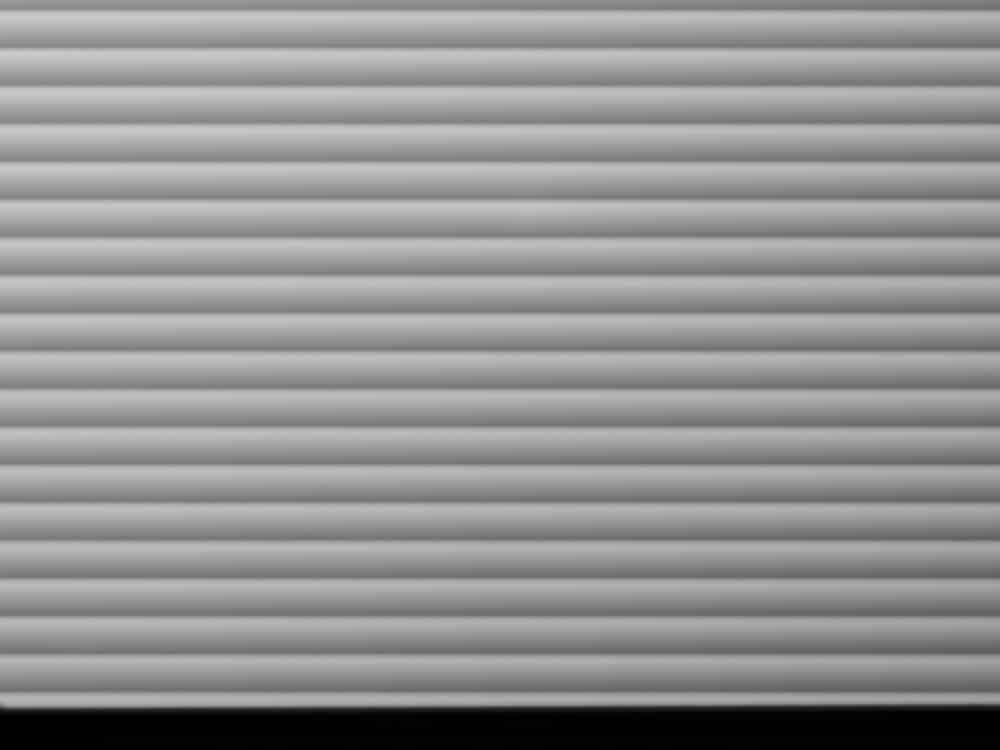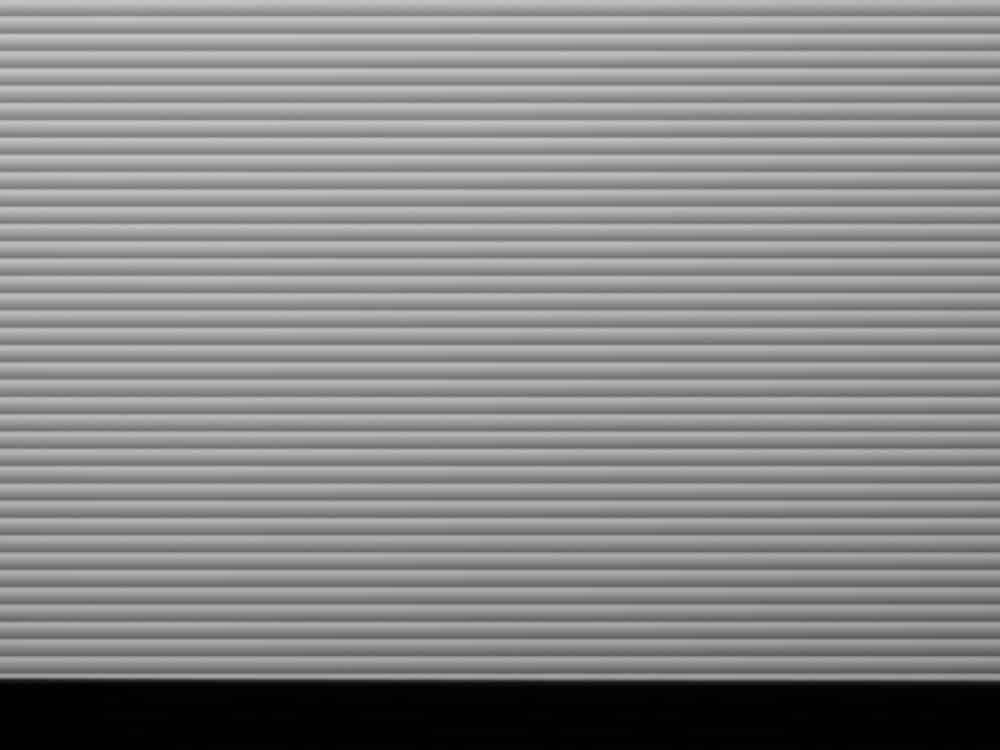This is the fifth post in a series of tests of the Fujifilm GFX 100, Mark II, which was released this week. You can find all the posts in this series by going to the Categories pane in the right hand panel and clicking on “GFX 100 II”.
In the past, I’ve measured the scan time of electronic shutters by photographing an analog oscilloscope trace of the output from a function generator. That was effective, but it took a while to set up and was a difficult experiment for some people to understand. So these days, I’ve been using a quick-and-dirty method: photographing light from an LED that’s modulated at 120 Hz. I didn’t use a lens for this, I just pointed the camera at the light source. I use single shot losslessly compressed raw at about 1/2500 second shutter speed at ISO 80. The high shutter speed was chosen to force the bands to be better defined, and thus easier to count.
Now with the electronic shutter (ES) enabled, single shot mode, and 14-bit raw precision:

I didn’t have the camera square to the light source, so I’m going to have to guesstimate how many bands there would be in the black region. The LED cycles at 120 Hz, which means the spacing between the dark lines is 8.33 milliseconds (ms). There are about 20.5 bands from top to bottom. That means it took the shutter 8.33*20.5 = 171 ms to make the trip. That’s about 1/6 of a second.
That’s just a hair longer than I measured with the GFX 100 and GFX 100S, and is within the tolerance of the test.
Now setting the raw precision to 16 bits:

Now there are 42 bands. 8.33*42 = 350 ms, or about 1/3 of a second.
This is exactly the same as the GFX 100 and the GFX 100S.
Fuji has advertised the GFX 100 II as having a faster readout rate than the GFX 100S. From the looks of this test, that ain’t right.
looks like the same sensor as gfx100 and 100s – they just did the iso 80 vs 100 trick like nikon did with the 36mpix sony sensor to gain some dr at base iso.
marketing bs from fuji – they just have a new cpu which can read out the sensor to its original max potential a bit better than its predecessors.
I wrote on another post about GFX100 II sensor gaining dual readout lines over older sensor as leaked on Fujirumors by known sensor datasheet leaker.
If that is the case, the stills readout won’t get any faster, but all other operations will.
The dual readout (based on X-T3 sensor datasheet that had such tech) can provide such benefits as:
1) dual sampling during exposing with different bit depth and gain. This means that while taking a still shot, the camera can sample the pixels during the exposing for EVF feed. Apparently GFX100 II does not do this at 16 bit, as reports say blackout is still there. This is probably to ensure best IQ, as I am sure the double readout will cause disturbance on the sensor. But at 14 bit it does it, and no blackout according to reports.
2) faster video readout.
The camera can sample two video frames even at the same time, if it wants to. Obviously that is not useful, so the camera probably uses different lineskipping for adjacent frames to achieve things like 60 fps 4k. So while 1st readout lines are still convering the first frame, the second frame is already exposed for the 2nd readout lines.
Or the camera can share the frame readout for both lines to achieve faster rolling shutter.
3) new AF possibilities. The dual readout allows reading PDAF pixel lines separately from the EVF feed, making it faster and parallel operation.
4) in theory, it could allow fancy DR tricks, by recording two different gains and bit depths of same still. But apparently Fuji has not done such, maybe because it would result to new kinda RAWs.
And maybe some other tricks. The thing I do not know is that how the dual readout affects the ongoing exposure. But the X-T3 datasheet claimed (if I understood correctly) that for one pixel reset, one can read whole sensor twice with different gain and bit depth.
This makes sense when looking at D-Range Priority setting in video. When it’s off, the readout is faster (rolling shutter is better). And when it’s on, the readout is slower (rolling shutter is worse) but the read noise is better.
It also makes sense when you consider that the ‘older’ sensors in the 100s and 100sii have limited video capabilities, presumably because they don’t have dual readout tech.
Shame they are not implementing some of the faster readout tech in stills and only have it for video.
It’s great to see you posting on Fuji again! I read nearly all your posts from the 50s on. Wouldn’t trust anyone else to put the 100 ii through its paces more thoroughly than you.